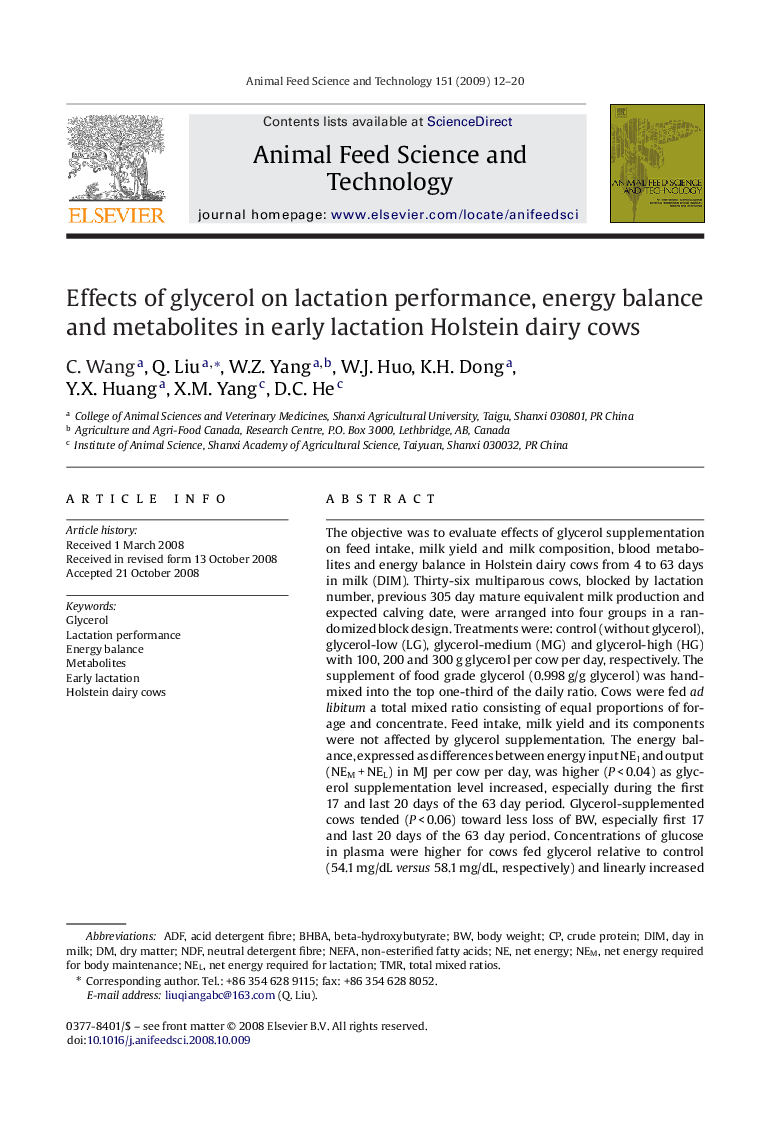| Article ID | Journal | Published Year | Pages | File Type |
|---|---|---|---|---|
| 2420283 | Animal Feed Science and Technology | 2009 | 9 Pages |
The objective was to evaluate effects of glycerol supplementation on feed intake, milk yield and milk composition, blood metabolites and energy balance in Holstein dairy cows from 4 to 63 days in milk (DIM). Thirty-six multiparous cows, blocked by lactation number, previous 305 day mature equivalent milk production and expected calving date, were arranged into four groups in a randomized block design. Treatments were: control (without glycerol), glycerol-low (LG), glycerol-medium (MG) and glycerol-high (HG) with 100, 200 and 300 g glycerol per cow per day, respectively. The supplement of food grade glycerol (0.998 g/g glycerol) was hand-mixed into the top one-third of the daily ratio. Cows were fed ad libitum a total mixed ratio consisting of equal proportions of forage and concentrate. Feed intake, milk yield and its components were not affected by glycerol supplementation. The energy balance, expressed as differences between energy input NEI and output (NEM + NEL) in MJ per cow per day, was higher (P < 0.04) as glycerol supplementation level increased, especially during the first 17 and last 20 days of the 63 day period. Glycerol-supplemented cows tended (P < 0.06) toward less loss of BW, especially first 17 and last 20 days of the 63 day period. Concentrations of glucose in plasma were higher for cows fed glycerol relative to control (54.1 mg/dL versus 58.1 mg/dL, respectively) and linearly increased (P < 0.01) with increasing glycerol supplementation level. Concentrations of non-esterified fatty acids, beta-hydroxybutyrate and urine ketones were lower for glycerol-supplemented cows at 7, 14 and 21 days of lactation and linearly (P < 0.01) decreased with increasing glycerol supplementation. Although milk yield and feed intake were not affected, glycerol-supplemented cows has a more positive energy status (higher concentrations of plasma glucose, lower concentrations of plasma beta-hydroxybutyrate, lower concentrations of urine ketones), suggesting that net energy availability may have been increased.
